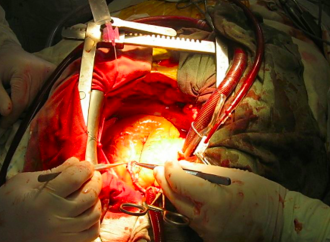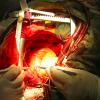PLATFORM Study Coronary computed tomography angiography (CTA) has become an important non-invasive exam in the evaluation of patients with coronary artery disease (CAD). In comparison to other strategies that start with the evaluation of functional ischemia, the anatomic approach provided by CTA was shown to provide very high negative predictive numbers, despite lower positive prediction.
PLATFORM Study
Coronary computed tomography angiography (CTA) has become an important non-invasive exam in the evaluation of patients with coronary artery disease (CAD). In comparison to other strategies that start with the evaluation of functional ischemia, the anatomic approach provided by CTA was shown to provide very high negative predictive numbers, despite lower positive prediction. In the Promise trial, CTA performed similarly to a strategy that used functional testing initially, although more patients enrolled in the CTA arm did undergo invasive treatment. To overcome this issue, the functional evaluation of anatomical lesions has been suggested to improve the effectiveness of CTA and noninvasive fractional flow reserve analysis FFR-CT) was developed to allow for supplementary flow information to static anatomical images.
In the Platform study, European centers enrolled patients with suspected CAD to either an initial invasive or non-invasive evaluation, with each arm being further stratified by the use or not of FFR-CT to guide treatment. The short-term results of the trial showed that FFR-CT guided treatment resulted in less need for planned invasive angiographies and fewer numbers of normal angiograms with similar clinical endpoints. In this study by Douglas et al, the authors now look at medium term results with 1-year outcomes in the same cohorts.
After 1-year follow-up, the invasive arm that was guided by FFR-CT cost significantly less than patients in this arm that were not assessed by the exam (USD8127 versus USD12145, P<0.0001). At the same time, routine use of FFR-CT in the initial noninvasive cohort resulted in similar total cost, not considering the extra cost of the FFR-CT exam. Quality of life was similar in both groups, independently of the use of FFR-CT. Clinical endpoints also did not differ among the groups.
Taken together, this new analysis of the Platform data allows us to conclude that at a longer-term follow-up, FFR-CT apparently is cost-effective when used in patients who start-off with an invasive strategy and the treatment is guided by the non-invasive functional analysis. When considering starting with a non-invasive approach, FFR-CT did not show at 1-year follow-up an improvement in cost and could end up costing more considering the additional expenditure with the exam itself. In terms of quality of life, Platform had showed an improvement using FFR-CT at 90 days but this advantage seemed to wane off as time went on. Of course, all these results should be interpreted considering a rather limited number of patients stratified (204 non-invasively and 380 invasively). Nevertheless, given the findings driven by the invasive arm, FFR-CT might be valuable tools in these patients without any loss in clinical outcomes or quality of life.
 IASC
IASC 




































Deje un comentario
Registrese para comentar. Sus e-mail no será publicados